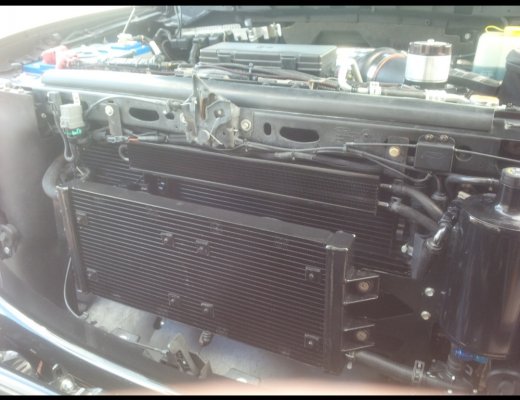People seem to refuse to believe science and physics. I have done testing on this very subject. Stacking heat exchangers gets dicey when the fin density of the leading exchanger is super dense. This is not the case with these FMICs.
Ok, let’s see some sciencey stuff then! Since early 2020, I will no longer commit to “Just believing the science”, since science and scientific method, like sex, have different meanings now, than what they used to.
The sporadic overheating threads are difficult to find on here and I remember one of the more popular threads being a gent who had both lights and FMIC + towing equaled overheating.
And the point about stacking.
so your radiator is capable of cooling your truck in all conditions as delivered. You mount an FMIC and reduce the CFM to the radiator now - maybe minimally, maybe slightly, depending on how dense the the FMIC fins and tubing is. In addition to the obstruction, you’ve also increased the temperature of the air going into the radiator. Again, maybe this is a slight increase, maybe more than slight. Unless the FMIC is magically lowering the exit air temp below ambient.
I believe we’ve had towers with just the FMIC report overheating concerns, without front mounted lights obstructing airflow - you cannot mount the S8 behind the grille with an FMIC, so they would have to be bumper mounted, pretty large and centered or blocking the air into radiator.
I think we also had a middle east user who had overheating concerns with the FMIC, as he was Raptoring in soft desert sand.
These scenarios are high load, low-ish speed. If you’re able to maintain speed with a higher load, you can make up for some airflow loss and increased inlet temps, but to a point and I don’t know what that point is.
Hard data and controlled testing would be great.


